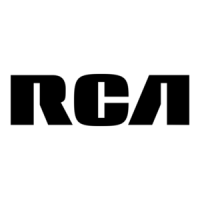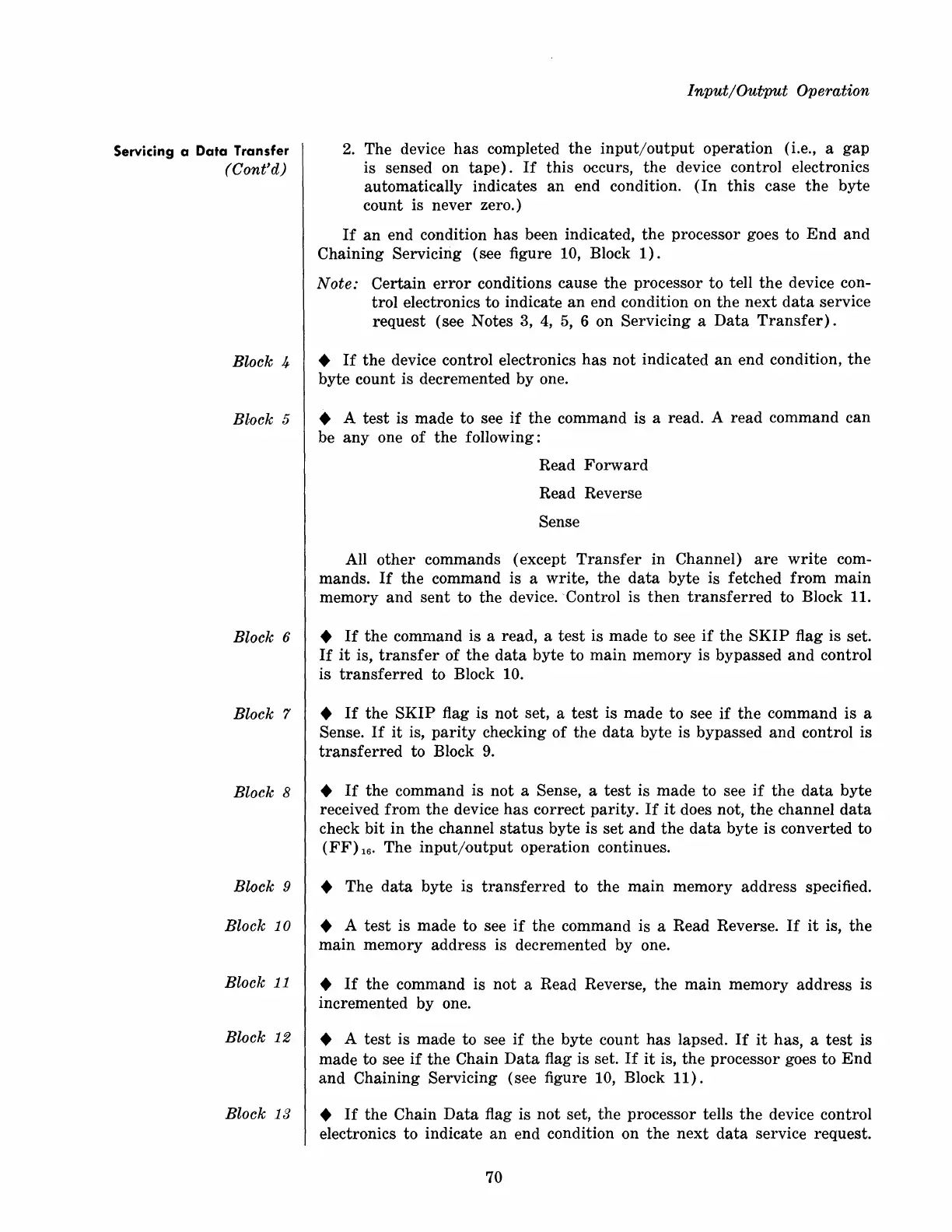Servicing a
Data
Transfer
(Cont'd)
Block
4.
Block 5
Block 6
Block 7
Block 8
Block 9
Block
10
Block
11
Block 12
Block
18
Input/Output
Operation
2.
The device
has
completed
the
input/output
operation (i.e., a
gap
is sensed on
tape).
If
this
occurs,
the
device control electronics
automatically indicates
an
end condition.
(In
this
case
the
byte
count is never zero.)
If
an
end condition
has
been indicated,
the
processor goes to
End
and
Chaining Servicirig (see figure 10, Block
1).
Note:
Certain
error
conditions cause
the
processor
to
tell
the
device con-
trol
electronics
to
indicate
an
end condition on
the
next
data
service
request
(see Notes 3,
4,
5, 6 on Servicing a
Data
Transfer).
•
If
the
device control electronics
has
not
indicated
an
end condition,
the
byte
count is decremented by one.
• A
test
is made to see
if
the
command is a read. A
read
command can
be
anyone
of
the
following:
Read
Forward
Read Reverse
Sense
All
other
commands (except
Transfer
in Channel)
are
write
com-
mands.
If
the
command is a write,
the
data
byte is fetched
from
main
memory
and
sent
to
the
device. 'Control is
then
transferred
to Block 11.
•
If
the
command is a read, a
test
is made to see
if
the
SKIP
flag is set.
If
it
is,
transfer
of
the
data
byte to
main
memory is bypassed
and
control
is
transferred
to Block 10.
•
If
the
SKIP
flag is
not
set, a
test
is
made
to
see
if
the
command is a
Sense.
If
it
is,
parity
checking
of
the
data
byte is bypassed
and
control is
transferred
to Block
9.
•
If
the
command is
not
a Sense, a
test
is made to see
if
the
data
byte
received
from
the
device
has
correct
parity.
If
it
does not,
the
channel
data
check
bit
in
the
channel
status
byte is
set
and
the
data
byte is converted to
(FF)
16.
The
input/output
operation continues.
• The
data
byte is
transferred
to the
main
memory
address
specified.
• A
test
is
made
to
see
if
the
command is a Read Reverse.
If
it
is,
the
main
memory
address
is decremented by one.
•
If
the
command is
not
a Read Reverse,
the
main
memory
address
is
incremented by one.
• A
test
is made
to
see
if
the
byte count has lapsed.
If
it
has, a
test
is
made to see
if
the
Chain
Data
flag is set.
If
it
is,
the
processor goes to
End
and
Chaining Servicing (see figure 10, Block
11).
•
If
the
Chain
Data
flag is
not
set,
the
processor tells
the
device control
electronics to indicate
an
end condition on
the
next
data
service request.
70

